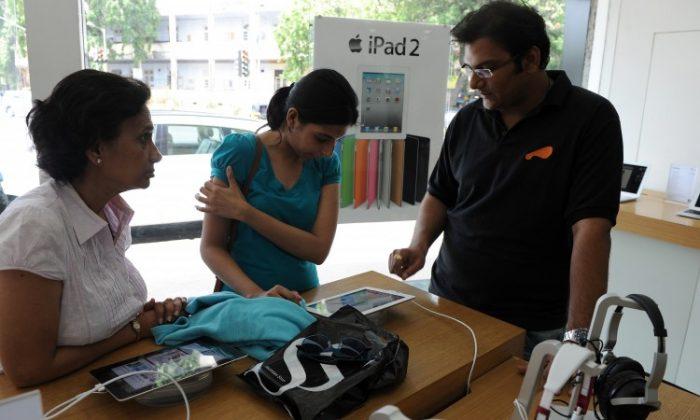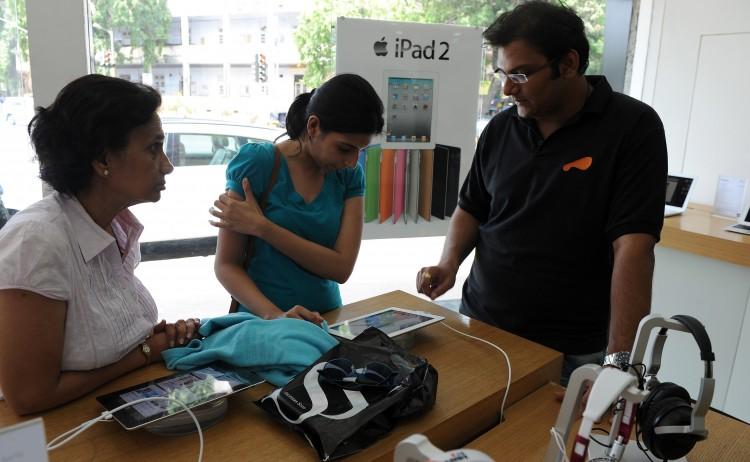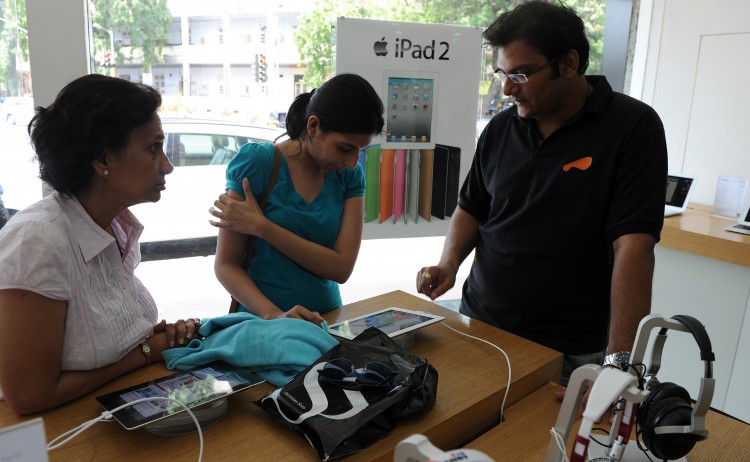Apple is overcoming its previous lack of enthusiasm and changing conventional logic to increase its market share in India, the world’s second largest and fastest growing telecom market. Apple’s growth in developed markets has been getting stagnant and the Cupertino giant appears to be looking at untapped markets like India where their penetration is currently only 1.2%, according to research firm IDC.
Investors have been worried about Apple’s inability to produce breakthrough products lately. Competition from South Korean manufacturer Samsung and others on design, price and functionality have weakened Apple’s dominant market hold in the tablet market. Shares of the company have fallen steeply, though some analysts who are long on Apple view this as a great opportunity to buy more.
The Indian smartphone handset market is estimated to reach 22.6 million units in 2013 according to Gartner. And by far, Samsung rules the market with 41.6% of the market, followed by Nokia. Samsung has a wide range of models with prices starting from just Rs. 6,500 (US $130). The price point is the main selling point for Indian consumers.
So far, Apple’s business model has been to tie-up with carriers who subsidize the cost of the phone. But this model cannot be applied in India where telecom manufacturers resort to region-wise distribution channels for supply. Based on this, Apple has renewed its strategy and partnered with distributors, Redington and Ingram Micro. Last month, Redington, which handles nearly 70% of Apple India’s sales reported better-than-expected revenues from iPhone shipments.
In a price sensitive-market where smart phones have only a 10% market share, Apple India has begun to try out installment-based payments. This provides a huge relief to Apple fans who have so far been unable to pay the whole cost of the phone upfront.
Sales of smartphones have steadily been on the increase due to the surge in Internet usage among the country’s 1.2 billion people. Technology giant Google last year predicted that India may add 200 million Internet users by 2014 to its current 100 million users. And a large chunk of those users are going to access the internet from their smart phones. This is good news for Apple and they still have time to make up for lost market share.
And they’re certainly making their presence felt here. “From having about 30 people here six months ago, Apple India is now about 150-people strong,” Jayanth Kolla, partner at Convergence Catalyst, said in an interview with the Economic Times.
And Apple’s connection with India runs deep. In the mid 1970s, a hippie and his friend landed in India in search of enlightenment. One of them experienced quite a bit of Indian culture during the trip. Returning back, he founded his company and presumably made his peace. That man was Steve Jobs. And now, his company is back in India and looking at the market with a vengeance This time they might find what they’re looking for.








Friends Read Free